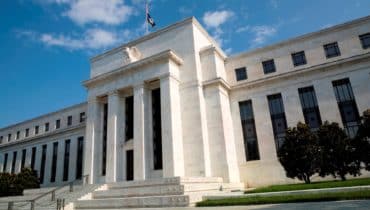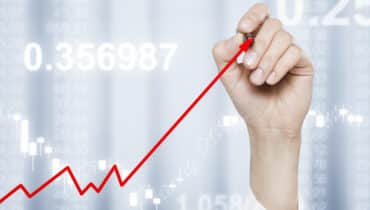Two developments are prominently noticeable on the markets at the moment: on the one hand, the indicators of real economic growth suggest a stable real economic growth rate of about 3%. On the other hand, we have seen global consumer price inflation decline since the beginning of the year. The reflation phase, i.e. the general increase in inflation in the second half of 2016, seems to be over (for now).
Article on tag "interest rates"
The global economy based on the Goldilocks principle
The global economy is growing moderately, inflation is low, and the monetary policy is loose. This environment supports many asset classes from bonds to equities. The political uncertainty has been absorbed rather well so far too. Will this situation last?

Curves (part 6) – provider of yields
Have you ever been to a Californian beach? If you have, you may have noticed the hoards of “searching”, elderly people. They would usually be holding a metal rod that beeps, looking for valuables that no-one else has found. And sometimes somebody finds a lost golden watch on the beach. But most of the time the things that turn up are only worthless beer caps.
Curves (part 5) – the offensive decides the match
Football has two strategies. Some prefer focusing on the defensive so as not to concede a goal – i.e. they try to maintain the status quo. Other teams favour the offensive and actively engage in a fight for victory – i.e. they take risks. The strategies on the bond markets are similar. Credit-safe government bonds are preferably used to protect one’s wealth, whereas risky corporate bonds are chosen to produce surplus gains.
Curves (part 4) – the premium, or spread, is the clincher
The interest rates, or coupons, that bonds pay differ due to a variety of parameters. If bond A pays a higher interest rate than bond B, this premium is referred to as spread.

A masterpiece
The US central bank Fed increased the Fed funds rate last Wednesday. The risky asset markets reacted to the move with an increase. At the same time, the US dollar depreciated. How can that be explained?
Equities: Threats and opportunities of rising interest rates
US interest rates are on the rise. It took the Federal Reserve Bank (“Fed”) twelve months, after the initial lift-off in December 2015, to make the second move, but for two reasons the odds of more frequent rate hikes over the next twelve months have increased.

US central bank confirms trend reversal
We have seen a number of trend reversals this year, one of them being the end of the negative growth surprises. The forecast of economic growth and inflation are currently not subject to downwards revisions any longer.

Emerging markets bonds in demand
Economic growth in the emerging markets has picked up substantially, while that in the industrialised economies has been rather stable. This has led to an increase in the growth differential in the emerging markets’ favour. Investor demand for emerging markets bonds has been on the rise in search of higher yields and interest rates.

Capital market review 2015
Capital markets experienced significant price fluctuations in 2015. While euro government bonds recorded a relatively good performance contrary to expectations, riskier bond segments such as high-yield corporate bonds were disappointing. Regionally speaking, stock exchanges recorded a very mixed set of performances. Emerging markets such as China and Brazil ended up on the disappointing side, whereas […]




